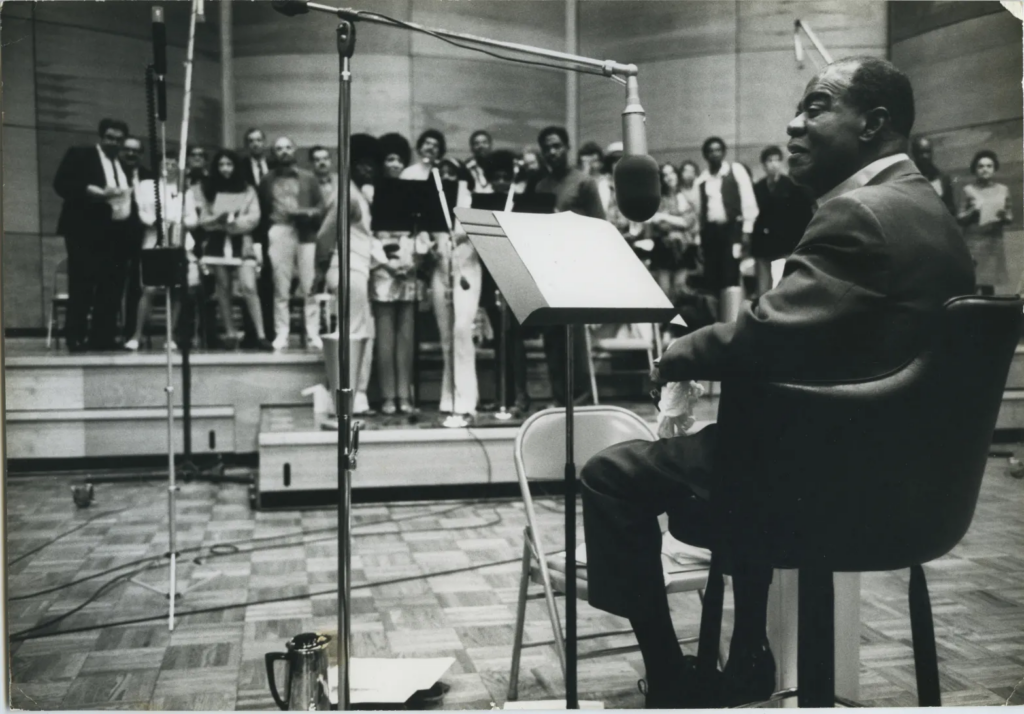|
Getting your Trinity Audio player ready...
|
As a resident of Chicago, I’ve often passed by Louis Armstrong’s former home in Bronzeville, marveling at the legacy of this jazz legend. While many know Armstrong for his iconic trumpet playing and gravelly voice, there’s so much more to discover about Satchmo. Here are 20 interesting facts you might not know about Louis Armstrong:
- Armstrong’s actual birthdate was August 4, 1901, not July 4, 1900, as he had long believed 4.
- He got his first cornet at the age of 11, kickstarting his musical journey1.
- Armstrong wore a Star of David pendant to honor the Jewish Karnofsky family who had employed and supported him in his youth4.
- He arrived in Chicago on July 8, 1922, to join King Oliver’s band, a date he initially remembered correctly but later confused in his autobiography2.
- Armstrong’s nickname “Satchmo” is a truncation of “Satchel Mouth”9.
- He was one of the first musicians to use the solo as a form of improvisation in jazz1.
- Armstrong had to stand 15 feet away from other musicians during early recordings due to his loud playing5.
- He was known for giving away laxatives as gifts, particularly a product called “Swiss Kriss”4.
- Armstrong boycotted his home state of Louisiana in 1956 due to segregation laws4.
- He once gave King George V the nickname “Rex” during a royal performance4.
- Armstrong had only a fifth-grade education, dropping out of school early to work3.
- He learned to play the cornet properly while at the Colored Waif’s Home for Boys3.
- His first studio recordings were made with King Oliver for Gennett Records in 19235.
- Armstrong’s second wife, Lil Hardin, encouraged him to seek more prominent billing and develop his own style5.
- He performed 300 nights a year well into the 1960s7.
- Armstrong’s recording of “Hello, Dolly!” dethroned The Beatles at the height of Beatlemania in 19647.
- He toured Communist countries like East Berlin and Czechoslovakia in 19657.
- Armstrong was a prolific letter writer, often corresponding with friends in New Orleans5.
- He took up smoking “gage” (marijuana) while living in Chicago8.
- Armstrong recorded “Irish Black Bottom,” a nod to a dance craze that even affected the Irish community8.

Louis Armstrong introduced several groundbreaking musical innovations
- He developed the rhythmic language of swing, making it the foundation of jazz and popular music1.
- Armstrong pioneered the use of extended solo improvisation, shifting jazz from a collective art form to one that showcased individual expression46.
- He transformed the role of the soloist, making the improvising soloist the focal point of jazz performances5.
- Armstrong introduced a new approach to singing, creating a loose, free, informal, and swinging vocal style that influenced countless jazz and pop singers1.
- He popularized scat singing, a style of vocal improvisation that became a hallmark of his music23.
- Armstrong’s trumpet playing expanded the instrument’s range, pushing the limits of the trumpet register with higher notes1.
- He introduced a new, simplified style of playing popular songs, creating melodic paraphrases and variations based on chord changes6.
- Armstrong’s phrasing innovations, including across-the-bar phrasing and odd syncopations, contributed to the development of swing and jazz singing3.
- His approach to reshaping melodies and lyrics in his vocal performances gave him the freedom to essentially re-sculpt songs in his own style1.
- Armstrong’s virtuosic trumpet playing set a new standard for jazz soloists, earning him the nickname “God” among his contemporaries3.

Louis Armstrong’s impact on jazz and popular culture is immeasurable. From his humble beginnings in New Orleans to becoming an international star, Armstrong’s life was as colorful and vibrant as his music. His innovative approach to jazz soloing, his distinctive vocal style, and his charismatic personality made him a true American icon. As we continue to celebrate his legacy, these lesser-known facts remind us of the complex, talented, and deeply human individual behind the legendary performances. Armstrong’s story is not just one of musical genius, but of resilience, creativity, and the power of art to transcend boundaries and touch lives across the globe.


